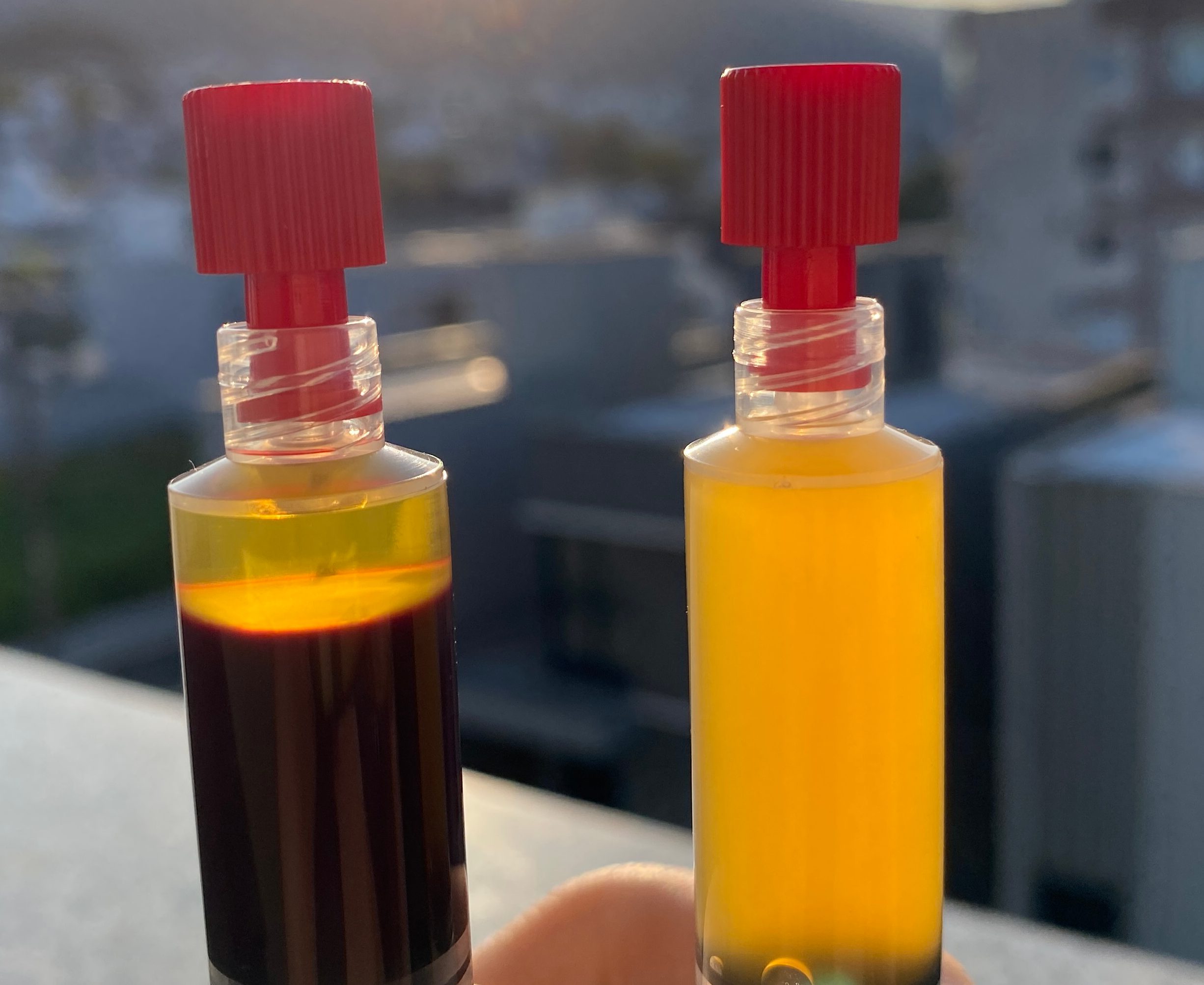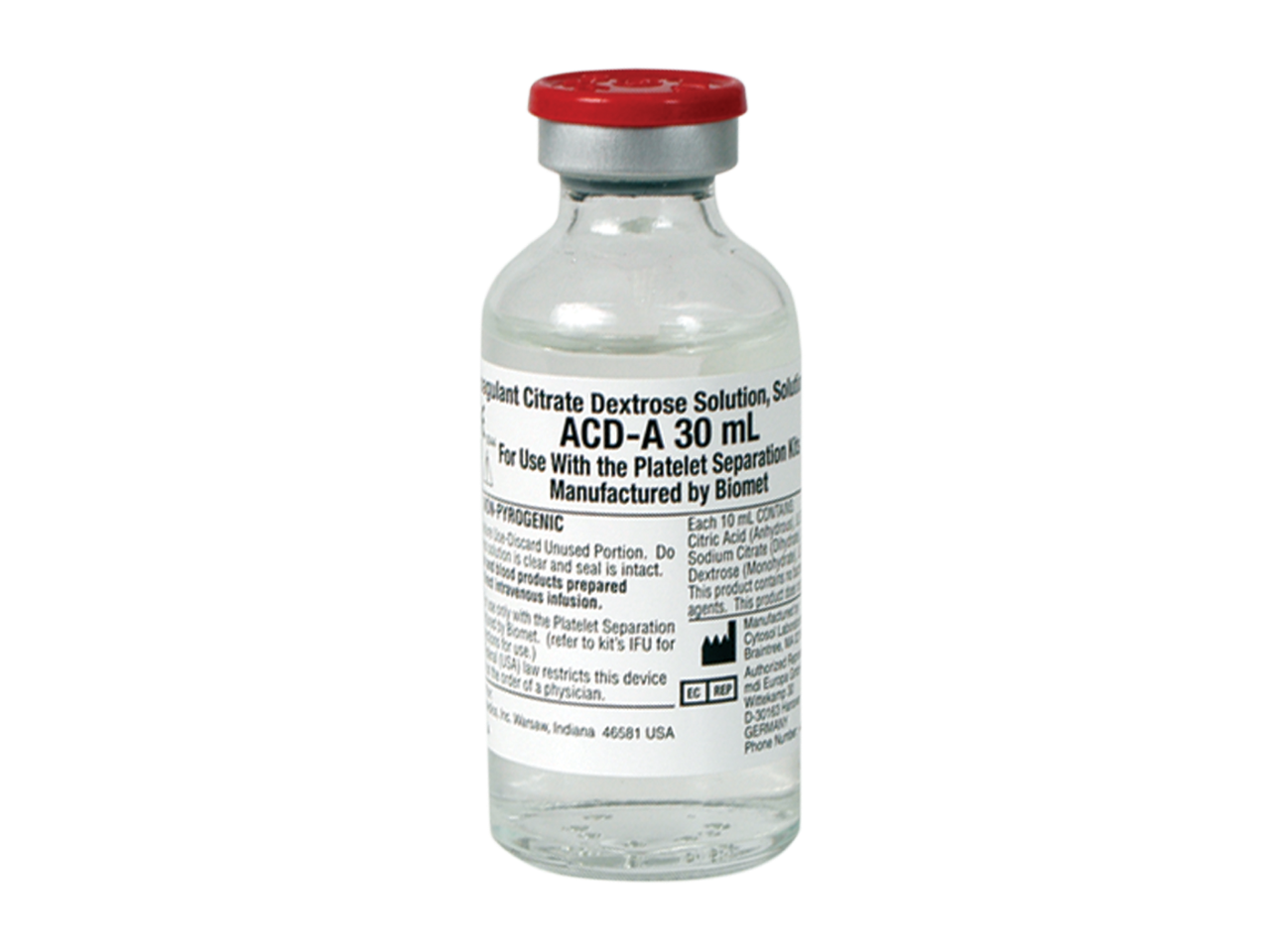NeutroFree PRP: Advanced PRP Preparation with Neutrophil Reduction
DIYPRP decentralizes medicine with the NeutroFree PRP System, a closed method designed to facilitate the safe and effective preparation of high-concentration, Leukocyte-Poor Platelet-Rich Plasma (LP-PRP). This system processes large volumes of whole blood, concentrating a higher number of platelets while significantly reducing neutrophils. It uniquely maximizes platelet concentration by using a dual spin method and accessing the buffy coat after the second spin. Leukocyte-poor PRP is ideal for the treatment of intra-articular disease.
Process Overview
- First Spin:
- The first spin separates the whole blood components, with platelet-poor plasma (PPP) rising to the top of the density gradient and the buffy coat concentrating between the plasma and erythrocyte layers.
- After the first spin, the PPP layer is carefully aspirated, ensuring that the buffy coat is not disturbed.
- Buffy Coat Extraction:
- During the PPP aspiration, stopping just short of the erythrocyte/buffy coat interface ensures that the buffy coat remains intact.
- The buffy coat is then extracted along with a small amount of the erythrocyte layer, ensuring the entire buffy coat and remaining platelets are collected for the second spin.
- Second Spin:
- After the second spin, the plasma layer, now highly concentrated PRP, is aspirated, again stopping short of the erythrocyte interface to avoid dilution.
This detailed process demonstrates how the NeutroFree PRP System provides a reliable method for producing high-quality LP-PRP, crucial for effective regenerative treatments.
Benefits
- High Platelet Concentration: This system can deliver PRP with a platelet concentration eight times over baseline.
- Neutrophil Reduction: The NeutroFree PRP System significantly reduces neutrophils and erythrocytes by over 99%, resulting in a pure LP-PRP.
- Enhanced Safety and Effectiveness: The closed system minimizes contamination risks, ensuring a safer and more effective PRP preparation.
Why Leukocyte-poor PRP?
The NeutroFree PRP system’s primary function is to create high-quality leukocyte-poor PRP (LP-PRP), which is superior for intra-articular applications where inflammation is counterproductive. Inflammation can exacerbate joint damage and hinder the healing process. Certain leukocytes, particularly neutrophils and macrophages, release cytokines like IL-1 and TNF-α, which contribute to inflammation and cartilage breakdown in joints. By reducing the leukocyte content, LP-PRP minimizes the release of these inflammatory cytokines, thereby promoting a more conducive environment for tissue repair and regeneration. This makes LP-PRP an optimal choice for treating joint conditions, such as osteoarthritis, where controlling inflammation is crucial for effective healing.
Concentration Analysis – 8.4x
| Parameter | Baseline Whole Blood | PRP 1 LP-PRP (more poor) | PRP 2 LP-PRP (less poor) |
|---|---|---|---|
| RBC | 5.42 | 0.0 | 0.01 | PLT | 73 (10^9/L) | 534 (10^9/L) | 617 (10^9/L) |
| WBC | 5.9 (10^9/L) | 0.1 (10^9/L) | 0.8 (10^9/L) |
| LYM | 2.5 (43%) | 0.8 (92.8%) | |
| GRAN | 3.0 (51%) | 0.0 (2.3%) | |
| MTD | 0.4 (6.0%) | 0.0 (4.9%) | |
| Reduction % RBC | 100.0% | 99.82% | |
| Reduction % WBC | 98.31% | 86.44% | |
| Reduction % LYM | 100.0% | 68.0% | |
| Reduction % GRAN | 100.0% | 100.0% | |
| Reduction % MTD | 100.0% | 100.0% | |
| Concentration Score | 7.32x | 8.45x |
Hemogram Observations
PRP 1 LP-PRP (more poor)
- Concentration factor of 7.32x.
- Erythrocyte reduction by nearly 100%.
- Granulocyte reduction by nearly 100%.
- Leukocytes (granulocytes, lymphocytes, monocytes) all significantly reduced by over 98%.
PRP 2 LP-PRP (less poor)
- Concentration factor of 8.45x.
- Erythrocyte reduction by nearly 100%.
- Granulocyte reduction by nearly 100%.
- Leukocytes (granulocytes, lymphocytes, monocytes) all significantly reduced by over 86%.
-

LP-PRP Preparation & Analysis
Using the NeutroFree PRP system, a leukocyte-poor PRP (LP-PRP) was prepared through a double-spin method, achieving a high concentration factor of 6.82x in a 5 mL sample. This process ensures over 4.4 billion platelets for effective therapy, with significant reductions in erythrocytes and leukocytes. The resulting PRP offers enhanced healing potential with minimal inflammation.
-

Preparation of Autologous Thrombin Serum (ATS) for Platelet Activation
Learn how to safely prepare autologous thrombin serum (ATS) from platelet-poor plasma using 10% calcium chloride for superior PRP activation in muscular and tendon applications.
-

10% Calcium Chloride Formulation
This article explains how to prepare and use 10% calcium chloride for PRP therapy, with a focus on its role in creating autologous thrombin serum (ATS) for muscle and tendon repair. It also contrasts its use with calcium gluconate in intraarticular applications.
-

Comparing PRP Anticoagulants: Why ACD-A Is the Gold Standard
This article compares the most common anticoagulants used in PRP preparation and explains why ACD-A offers superior platelet preservation and clinical safety across both LP-PRP and LR-PRP protocols.
-

Choosing the Right Platelet Activator: A Comparative Analysis of PRP Activation Methods for LP-PRP and LR-PRP
This article explores how different PRP activation methods—chemical, mechanical, thermal, and ultrasonic—affect therapeutic outcomes in LP-PRP and LR-PRP applications. It makes a clinical case for calcium gluconate in joints and autologous thrombin in muscle repair.
-

Welcome to DIYPRP: A New Standard for Autologous Platelet Therapy
Discover the mission behind DIYPRP: a closed-loop, physician-grade system for preparing high-quality leukocyte-poor PRP. Built for intra-articular applications, solo operators, and serious regenerative medicine enthusiasts.
-

Homemade Variable Angle Centrifuge
Discover how to build a cost-effective, homemade centrifuge for PRP preparation using simple materials and DIY ingenuity. Learn about the design, specifications, and operational procedures to ensure safe and efficient centrifuge use.
-

PRP Processing Station
The PRP processing station is an innovative bench-top device designed for the precise preparation of platelet-rich plasma (PRP). Utilizing a rack and pinion mechanism, this station ensures accurate platelet selection and high platelet concentration. It’s a cost-effective and efficient solution for at-home PRP preparation.
-

Konted C10CX Linear Ultrasound
Discover the transformative power of portable ultrasound devices in home-based medical practice. The demonstration video showcases the C10CX, a high-definition, wireless linear ultrasound probe, in action, accurately identifying and examining key anatomical structures in the knee, enhancing precision in PRP injections, and improving patient outcomes with guided needle infiltration.
-

ACD-A Anticoagulant Formulation
Formulating ACD-A (Acid Citrate Dextrose Solution A) is crucial for maintaining blood component integrity during collection and preservation, making it indispensable for PRP (Platelet-Rich Plasma) preparation. This guide details the materials, procedural steps, and safety precautions needed to ensure the accuracy and efficacy of ACD-A in medical and research applications.
Decentralizing Regenerative Medicine
DIY PRP is redefining regenerative medicine by putting it into the hands of the people. Instead of relying on centralized systems where access depends on prescriptions, licenses, and gatekeepers, our open protocols and guides empower anyone to prepare safe, effective platelet-rich plasma at home. With simple tools, transparent science, and a philosophy of decentralization, DIYPRP makes regenerative therapy accessible, affordable, and truly independent.
“Wherever the art of medicine is loved, there is also a love of humanity.”
Hippocrates
DISCLAIMER
Please note that there are limitations to the applications of PRP therapy that can be safely performed without expert medical intervention. Before attempting to process PRP independently, it is essential to acquire the necessary medical knowledge. This includes understanding various aspects of PRP therapy such as its biophysical principles, medical applications, and diagnostic procedures. Always consult with a healthcare professional to ensure safe and effective use of PRP therapy.










